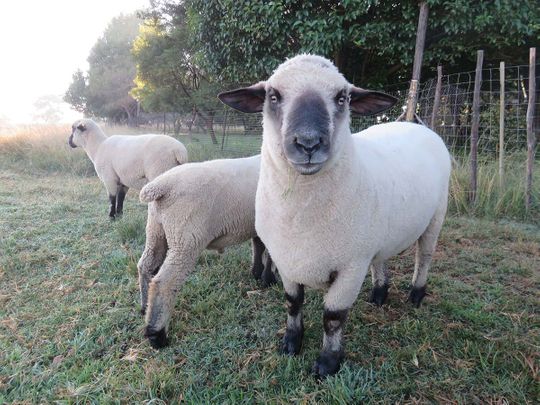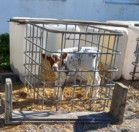
I am having second thoughts now on how much dairy products I will use. Yes, I will still continue to use milk in my coffee and on my morning cereals — but I’m having a serious rethink over the way commercial dairy farming operates.
Last week I spent five days living on a dairy farm in the southwest of Norway. Sure, I’ve been to farms many times before but, up to now, hadn’t actually spent more than a couple of hours down on the farm.
Quite frankly, I’m disturbed. And as I write this, I can still hear the lonesome bellows of the day-old male calf pictured here.

For dairy operations to continue month after month producing milk, the cows must have recently given birth. And obviously, for a milking operation to continue, the female calves born are useful. The males — not so much.
This calf was born on Tuesday. It’s male. He was removed from his mother before he could suckle. The remains of his umbilical cord were still attached to him. He was placed in the cage with a bucket of water and some straw.
On Wednesday a truck came and he was taken off to, as those in the dairy industry might put it, “be processed”. That involves being killed with a bolt through his brain, and every possible piece of his two-day carcass being used for veal, glue, dog meat and products that are used in make-up and the like.
This is the dirty little secret of the commercial dairy industry — and it has been going on for years. Thankfully, the European Union and the United Kingdom have agreed to put a stop to the practice that has, rightly, prompted outrage from animal welfare groups, activists and many within the wider farming community itself.
Lamb to the Slaughter
Figures are hard to come by but in 2018 in the UK alone, it was estimated that just short of 100,000 male calves were killed within a few days of their birth.
In the harsh world of agricultural economics, it’s cheaper for farmers to dispose of male calves than it is to rear them, feed them, spend money on vets fees and dehorning them, bringing them to adolescence or adulthood. They don’t fatten like beef-bred breeds do, so their carcasses won’t get much when it comes to time to turn them into steaks, mince, roast beef and burgers.
Yes, modern husbandry practices mean that it is possible to inseminate cows with modified semen that significantly limits the number of males calves to roughly 10 per cent — but that practice costs farmers more. And when margins are tight.
I am a little angry at myself for being naive when it comes to this. It is something I hadn’t been aware off, something that simply wasn’t on my radar when I wheeled my trolley through a shop and took products from the dairy aisle.
I will confess too that I have always viewed animal rights activists with a dose of scepticism, in part because of their unorthodox protest methods. I think there was an element of anarchy in their actions that ran counter to my general belief in law and order and the continuity of society while I try to hold officials to account in my role as journalist. So yes, naive.
I also like my food that comes on the hoof. And yes, I am no fan of veganism. Not everything made from plants can taste the same as things they are supposed to replicate — not matter how sophisticated the marketing or dedicated the vegans.
But from now on, I will read the fine print on labels to ensure that it is ethically sourced. That’s the least I can do.








